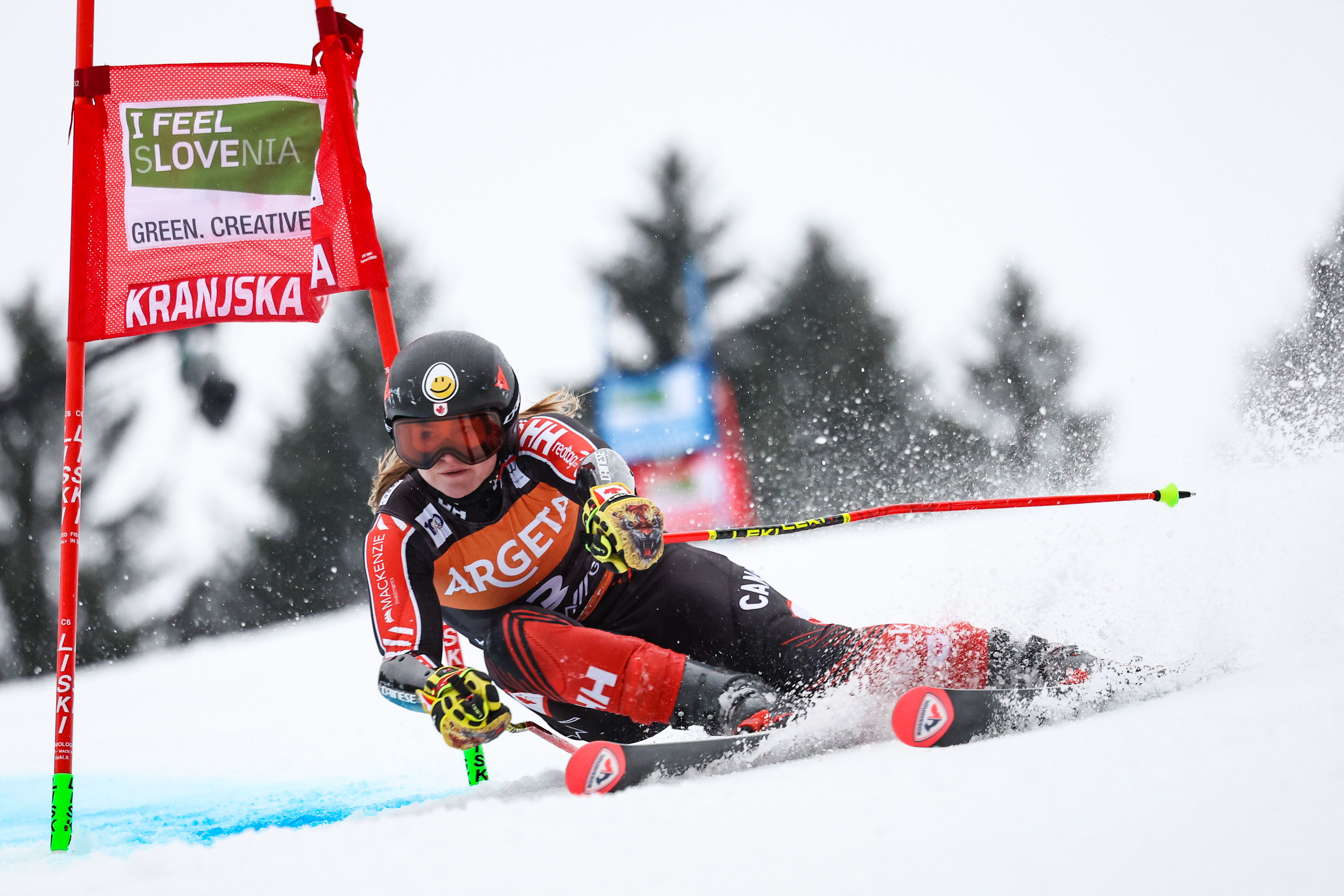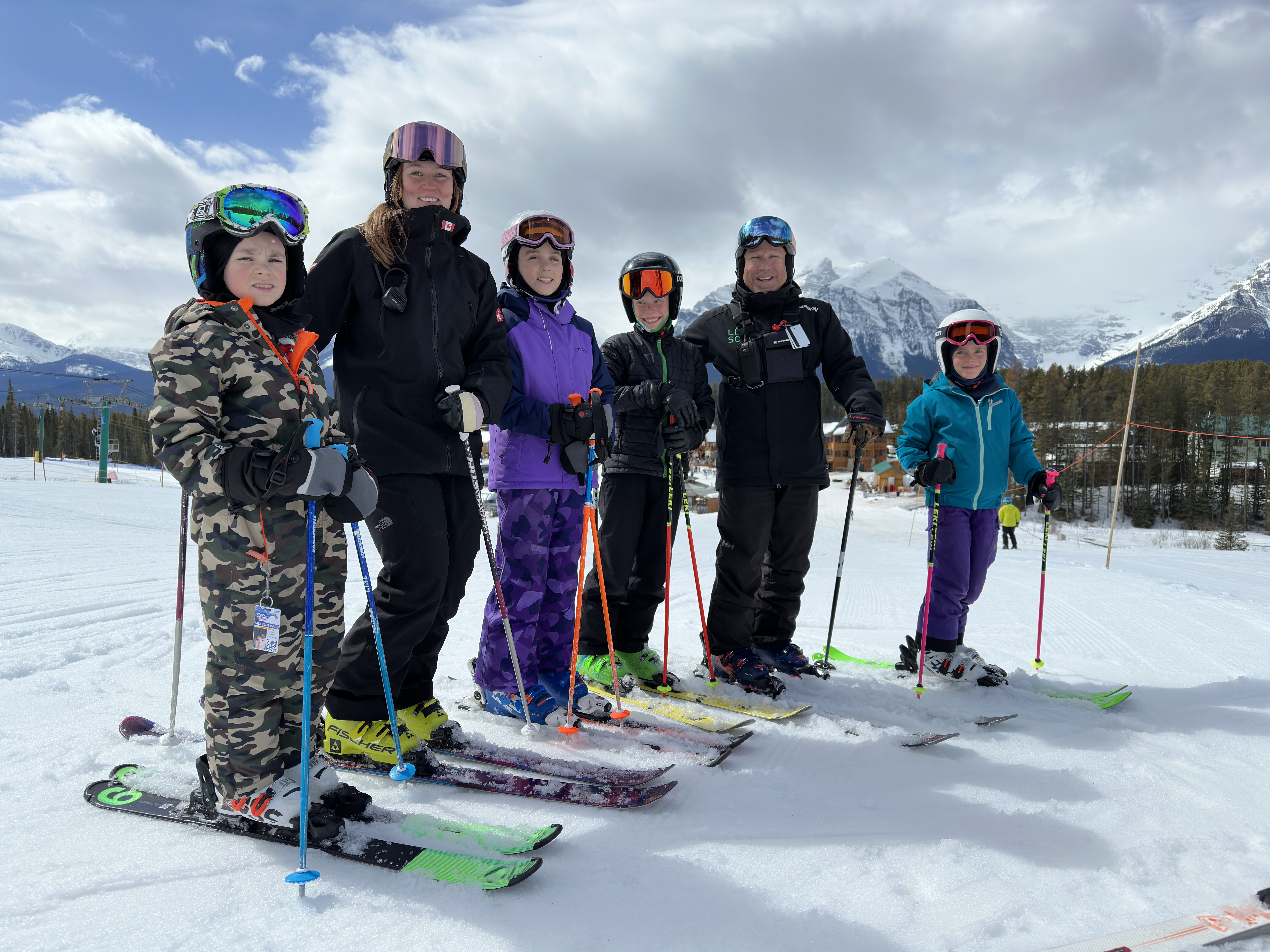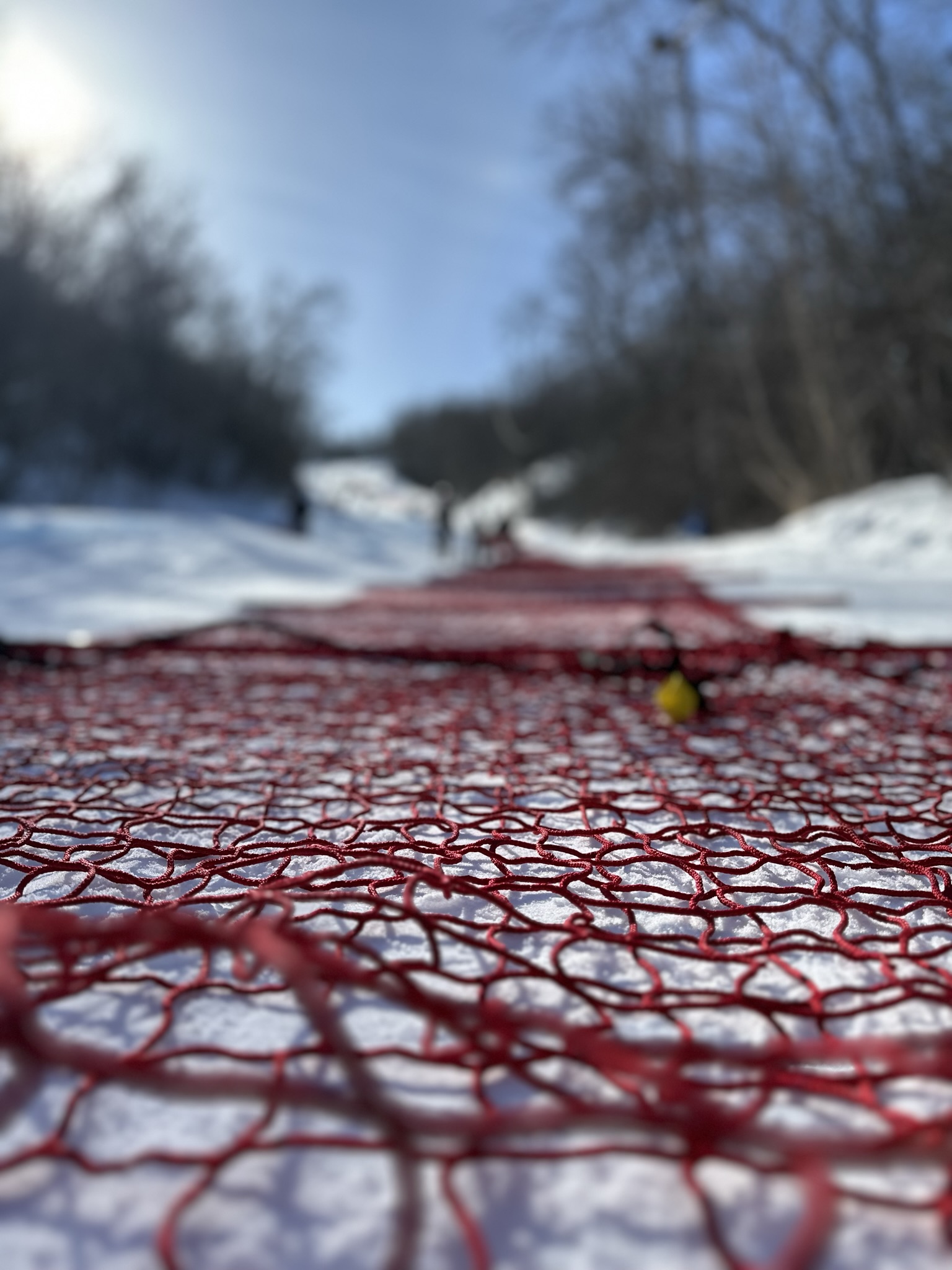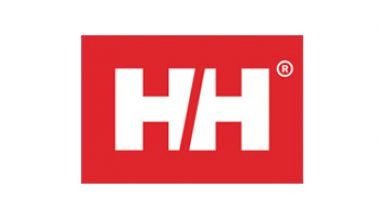Reference Materials
Photo: GEPA
Alpine Canada Training and Competition Volumes Matrix - one-page summary reviewing the suggested training to competition ratios, days on snow per year and weekly training volumes for each development stage.
Alpine Canada Training and Competition Focus Matrix - one-page summary reviewing the suggested training and competition focus for each stage.
Ski Cross Reference Materials
FORMAT
In World Cup, World Championship and Olympic races, athletes complete a qualification round that is run as a time trial, with racers skiing the course solo. Based on their qualification time, athletes are placed into brackets for heat racing. In heats, four athletes race head to head down the course, with the top two from each heat advancing to the next round. Finals consist of a small final, with athletes competing for places 5 to 8 and a big final which determines the winner of the race, following by 2nd, 3rd & 4th. At the Winter X Games – one of the sport’s biggest events – six skiers compete for head to head instead of four.
Alpine Canada Ski Cross Progression Matrix - one-page summary reviewing the competition recommendations, course guidelines, performance benchmarks and race formats for each development stage.
Alpine Canada Training and Competition Volumes Matrix - one-page summary reviewing the suggested training to competition ratios, days on snow per year and weekly training volumes for each development stage.
Alpine Canada Training and Competition Focus Matrix - one-page summary reviewing the suggested training and competition focus for each stage.
Ski Cross Glossary
Courtesy of CanWest News Service Article from January 15, 2010.
- Banked turn: turn that is set at an angle helping in the direction of the turn.
- Basketball turn: reverse banked turn, off angle, fall-away. The bank works against the direction of the turn.
- Blocking: skiing in a manner to protect yourself from being passed.
- Butter or buttered: skiing a section or terrain very smoothly
- Bounced, or Bouncing: missing transitions through a roller section, or what you do when you "knuckle."
- Boxed or Boxed in: stuck in a place/position that doesn't allow you to do what you want.
- Case, Cased or Casing: coming up short on a jump, landing before the transition.
- Double: a set of two "rollers" that can be jumped or "doubled."
- Drafting: following closely behind another skier.
- Flat turn, GS turn or Alpine turn: a turn that has no feature built to define it, it is flat like a Giant Slalom turn.
- Hole-shot: winning the start and taking the lead
- Knuckle: place on a feature where a flat spot rolls into a transition.
- Knuckled: landing just short of making the transition.
- Locked: stuck on edge, off-balance without the ability to release
- Nail or nailed: skiing a section or terrain very well, fast
- Over-shoot, over-shot: jumping long on a feature, missing the transition, or ideal landing area.
- Pancaked, Pancaking: landing flat and hard, either short or long.
- Rollers: section of terrain made up of rounded, wavy terrain. A skier is usually able to stay on the ground through a roller section.
- Sling-shot: using the draft to accelerate and eventually pass another skier.
- Step up: jump where the landing is higher than the take-off.
- Squeezed: getting caught between two skiers, or a skier and a gate, or fence, and are unable to move
- Step-down: jump where the landing is lower than the take-off.
- Table or table-top: A jump where the take-off is at a similar level as the landing. Where the athlete has the option of clearing the flat portion in the middle and landing on the downslope of the feature or if travelling at a reduced speed can ski across the top.
- Tranny: slang for the transition.
- Transition: an ideal place to land on a feature, where landing is most forgiving, or part of a feature where speed can be generated by "working," "pumping," "milking."Triple: a set of three "rollers" that can be jumped all at once, or "tripled."
- "Working" or Worked: (ex: Working a section, "I worked the rollers really well") Using the terrain to generate speed. (synonymous with pumping, milking)
Alpine Canada Training and Competition Volumes Matrix - one-page summary reviewing the suggested training to competition ratios, days on snow per year and weekly training volumes for each development stage.
Alpine Canada Training and Competition Focus Matrix - one-page summary reviewing the suggested training and competition focus for each stage.
Para-Alpine LTAD Progression - multiple page PDF reviewing the suggested training volumes and focus at each one of the development stages.
- Alpine Canada Athletic Character Tracking Document
- Alpine Canada Coach Education Athletic Character Webinar: Frank van den Berg, Director of Mental Performance for Calgary Sport Institute Calgary and Jennifer Stielow, Senior Coach Education Manager for Alpine Canada present an overview of the new Athletic Character assessment. The Athletic Character assessment is focused on developing positive mental fitness in both sport and life.
- Alpine Canada Performance Planning Coach Workbook (2016). Accessed by ACA-CSC member profile only.
- ACA Physical Fitness Testing Protocol (pdf)
- Alpine Canada Training and Competition Volumes Matrix - one-page summary reviewing the suggested training to competition ratios, days on snow per year and weekly training volumes for each development stage.
- Alpine Canada Training and Competition Focus Matrix - one-page summary reviewing the suggested training and competition focus for each stage.
- Angela Lee Duckworth: Grit: The power of passion and perseverance|TED Talk
- Bjerke, Ø., Lorås, H., Pedersen, A. (2016). Variations of the Relative Age Effect Within and Across Groups in Elite Alpine Skiing. Comprehensive Psychology; 5:1-6. doi: 10.1177/2165222816648077
- Brown KA, Patel DR, Darmawan D. Participation in sports in relation to adolescent growth and development. Transl Pediatr 2017;6(3):150-159. doi: 10.21037/tp.2017.04.03
- Carol Dweck: The power of believing that you can improve| TEDxNorrkoping
- Centre for Sleep and Human Performance
- Children in Sport
- CSIA Teaching Children Manual
- Dieticians of Canada Feeding Infants and Toddlers With leadership and support from the BC Ministry of Health, Dietitians of Canada created focused messages and tips for parents on feeding infants and toddlers from 0-24 months.
- Dieticians of Canada Raising Healthy Kids Raising Our Healthy Kids is a series of short 60 – 90-second videos providing information to parents and care providers on healthy growth and development of children up to 12 years of age.
- Eitzen DS, Sage GH. Sociology of North American Sport. 8th ed. Boulder, CO: Paradigm Publishers; 2009.
- Faigenbaum, Avery D., Westcott, Wayne L.. Youth Strength Training Programs: Human Kinetics. 2009.
- Fraser-Thomas J, Côte J. Youth sports: implementing findings and moving forward with research. Athl Ins. 2006;8(3):12-27.
- Gambetta V. (2007). Athletic Development: The Art & Science of Functional Sports Conditioning. Champaign, IL: Human Kinetics.
- Health Canada - Canada's Food Guide
- Sport for Life - Long Term Development in Sport & Physical Activity 3.0. Higgs, Colin & Way, Richard & Harber, Vicki, Jurbala, Paul, Bayli, Istvan. (2019). Long-Term Development in Sport and Physical Activity 3.0. Canadian Sport for Life. ISBN: 978-1-927921-62-3.
- Istvan Balyi, Richard Way, Colin HIggs. Long Term Athlete Development. Human Kinetics. 2013.
- Malina, R. M. & Bouchard, C. (1991). Growth, maturation and physical activity. Champaign, IL: Human Kinetics.
- McGuigan M. (2017). Monitoring training and performance in athletes. Champaign, IL: Human Kinetics.
- Müller, L., Müller, E., Hildebrandt, C., Kronexl, E., & Raschner, C. (2015). Influential Factors on the relative age effect in alpine ski racing. PLOS ONE, 10(8), e0134744.
- National Coaching Certification Program
- Petichkoff LM. Youth sports participation and withdrawal: Is it simply a matter of fun? Pediatr Exercise Sci. 1992;4:105-110.
- Physical Literacy Concept Paper Ages 0-12 Years
- Physical Literacy Consensus Statement
- Physical Literacy Movement Prep
- PLAYfun is used by a trained professional* to assess a child in 18 fundamental skills/tasks, such as running, throwing, kicking and balance.
- PLAYbasic is a simplified version of PLAYfun that can be administered quickly by a trained professional in movement analysis to provide a snapshot of a child’s level of physical literacy.
- PLAYself is used by children and youth to evaluate their own physical literacy.
- PLAYparent is used by parents of school-aged children to assess their child’s level of physical literacy.
- PLAYcoach is used by coaches, physiotherapists, athletic therapists, exercise professionals and recreation professionals to record their perceptions of a child’s level of physical literacy
- PLAYinventory is a form used to record and track a child’s leisure-time activities throughout the year
- Sleep, Recovery and Human Performance - Canadian Sport for Life
- SEPTEMBER 2016 – PHYSICAL FITNESS TESTING WEBINAR RECORDING: This webinar provides an overview of Alpine Canada’s nationwide physical fitness testing protocol presented by Alpine Canada’s Director of Sport Science, Matt Jordan, PhD (c), CSCS. The goal of the new physical fitness testing protocol is to ensure Canadian skiers are developing ski-specific fitness abilities as they progress through the athlete development pathway.https://alpinecanada.adobeconnect.com/p5cwrcb1yg2/
- Sport For Life Long Term Athlete Development Stages
- Sport for Life Mental Fitness for LTAD
- Sport for Life: The Role of Monitoring Growth in Long-Term Athlete Development Istvan Balyi & Richard Way
- TA Foundation Athlete Development Study (2016)
- Willinger, H. Banff Alpine Racers alumnus Read and Philp give back to local club. Rocky Mountain Outlook. Feb. 22 2018.
- Dr. Joan N. Vickers, Professor, Faculty of Kinesiology, University of Calgary is the author of Perception, Cognition and Decision training – The Quiet Eye in Action, Human Kinetics Publishers, 2007.
- Visek, Amanda & M Achrati, Sara & Manning, Heather & Mcdonnell, Karen & S Harris, Brandon & Dipietro, Loretta. (2014). The Fun Integration Theory: Toward Sustaining Children and Adolescents Sport Participation. Journal of physical activity & health. 12. 10.1123/jpah.2013-0180.
- Visek, Amanda & Mannix, Heather & Chandran, Avinash & Cleary, Sean & Mcdonnell, Karen & DiPietro, Loretta. (2018). Perceived importance of the fun integration theory’s factors and determinants: A comparison among players, parents, and coaches. International Journal of Sports Science & Coaching. 13. 174795411879805. 10.1177/1747954118798057.
- Warrington, G. Dr. (2010). Planning for Performance http://www.sportireland.ie/Coaching-Ireland/Publications-/Planning-For-Performance.pdf . Coaching Ireland
- Watch the Sport for Life video: What is Physical Literacy?


.jpg)


